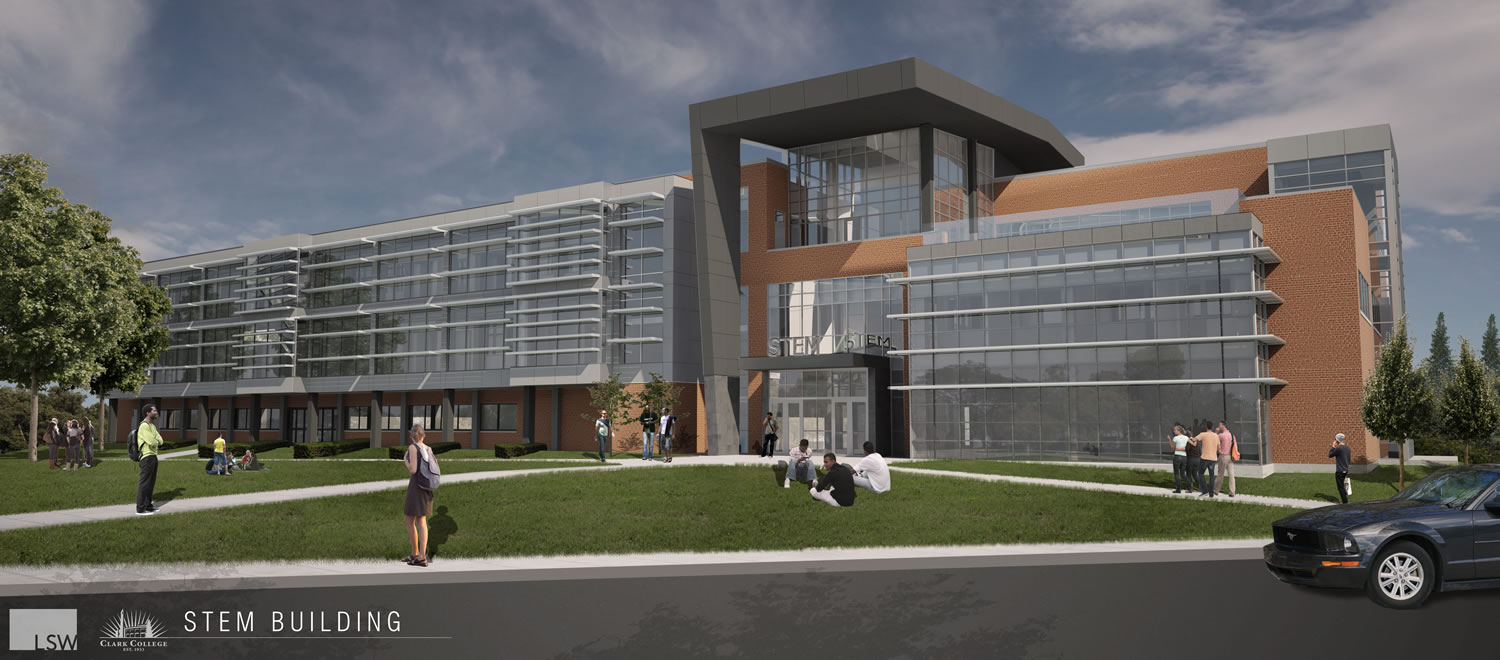Price tag: $41 million.
Funding: $36.4 million in state allocations; seeking contributions for the rest.
Size: 70,000 square feet.
Facilities: Three floors with classrooms, labs, offices and study spaces, plus a basement with mechanical equipment.
After years of effort, Clark College is edging closer to bringing a $41 million science and technology building to its main Vancouver campus.
The college will review construction bids starting Wednesday, and aims to break ground in late July or August.
The planned academic building will allow students in biology, chemistry, physics and engineering programs to use cutting-edge tools, said Bob Williamson, vice president of administrative services at Clark College. It will also let the college expand some class sizes and reduce wait lists for popular science courses, he said.
Price tag: $41 million.
Funding: $36.4 million in state allocations; seeking contributions for the rest.
Size: 70,000 square feet.
Facilities: Three floors with classrooms, labs, offices and study spaces, plus a basement with mechanical equipment.
“This STEM project will allow us to provide a first-class education to students, respond to workforce needs, and remain competitive in the region,” Williamson said, using education-world jargon for “science, technology, engineering and math.”
Despite the STEM acronym, math-related classrooms are not included in the plans.
Many of the programs planned for the new building require special equipment, Williamson said. “We can be flexible when finding a location for math, but it’s harder to be flexible with a chemistry lab or a cadaver lab,” he said.
Jim Watkins, project manager at Clark College, said that because of space and equipment limits, many students face long waitlists before they can sign up for certain science classes now. The STEM building will allow some popular biology and chemistry programs to boost enrollment by 50 percent to 60 percent, he said.
And moving science and engineering programs into a single building will allow the college to make better use of its remaining classrooms.
Washington State University Vancouver completed a $43.5 million, four-story STEM building in 2012.
“I see the two projects as complementary,” Williamson said. “We are a two-year school. Some of our graduates will transfer to WSUV or another four-year institution to continue their studies.
“We also have a career-training program. Some of our students here will graduate with a certificate to go directly into the workforce. That’s not something WSUV does.”
State officials gave the project the green light back in 2012. The state allocated $36.4 million to the project, and the Clark College Foundation is working with college officials to make up the funding gap.
An uncommon technique, known as “post tensioning,” will save time and money during construction, Watkins said. The method uses a grid of high-strength steel cables laid down to define the shape of the building before concrete is poured.
Watkins also hopes that the current commercial construction environment also works in Clark College’s favor. “There’s not a lot of new large-scale construction in Vancouver or the Portland area,” he said.
Companies bidding on the project must have completed at least three projects of $25 million or more in the past 10 years.
Construction will temporarily limit access to some parking at Clark College, but once the building is complete the school will gain 160 to 180 new spots, Williamson said.
Williamson expects the building to be built by December 2015. Then it will take another three to four months to outfit with furniture, lab equipment and other materials. The building should be ready for classes by the start of the 2016-17 academic year — maybe sooner.



